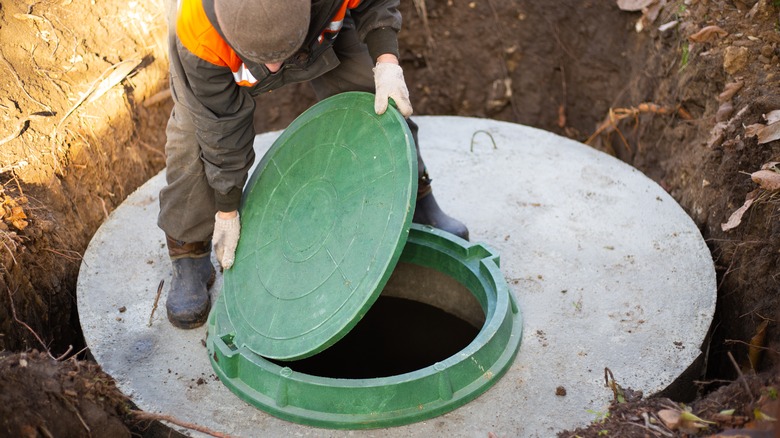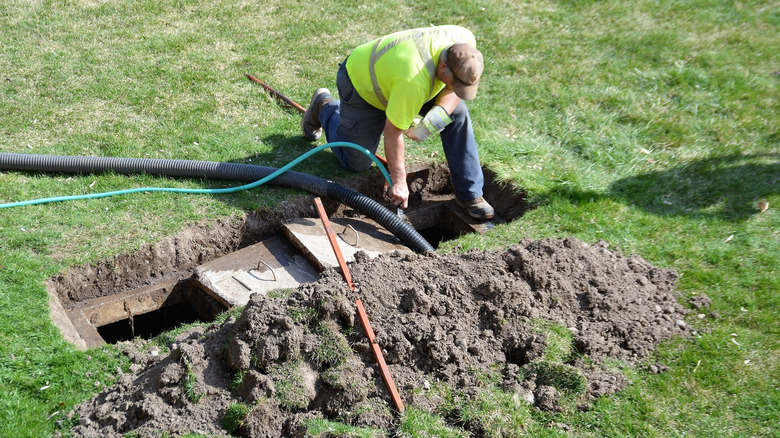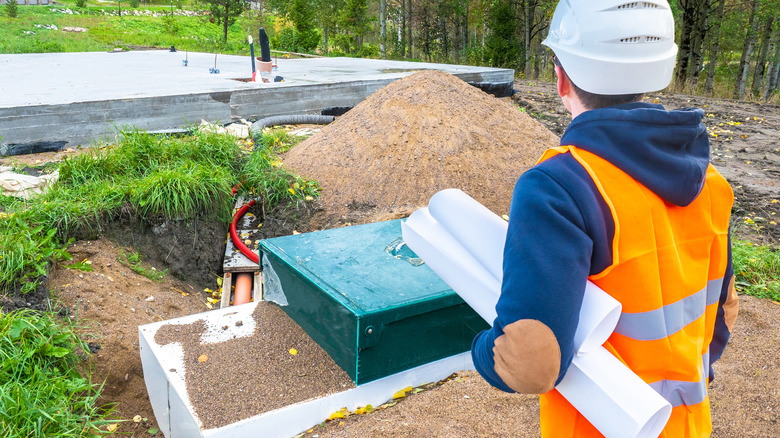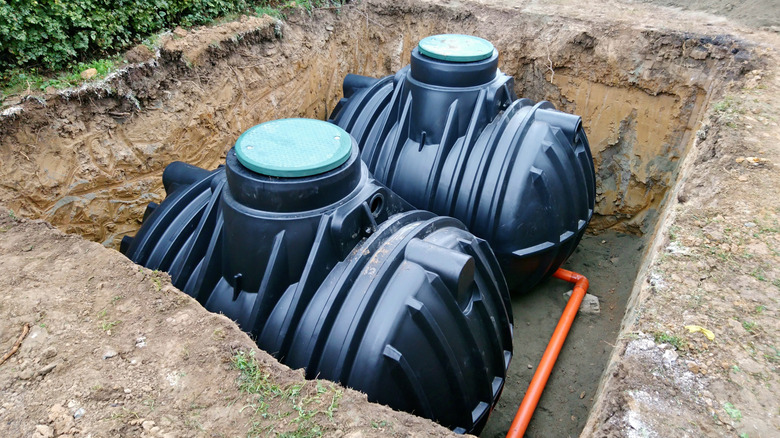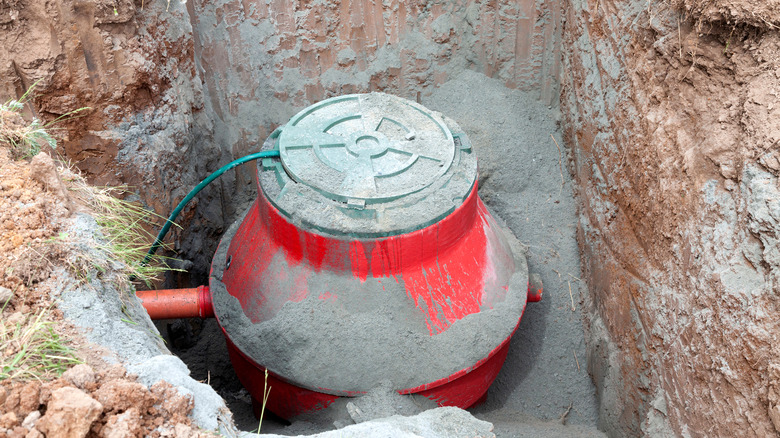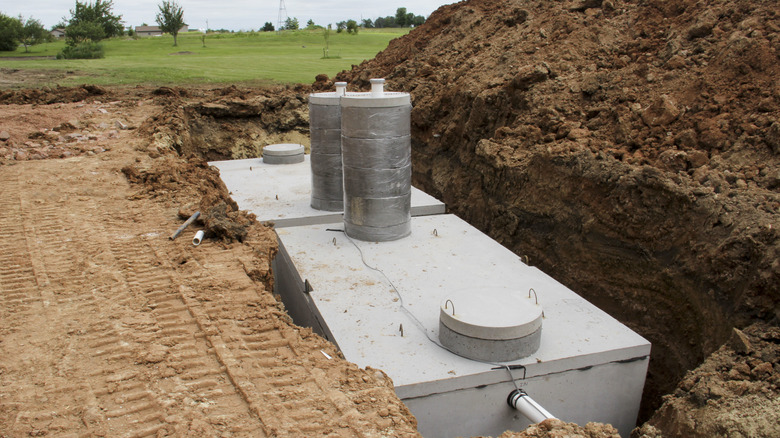How Much Does It Cost To Replace A Septic Tank
Replacing your septic tank is an important task that must be done from time to time. The septic system itself is made up of a series of crucial junctures from the pump and piping that bring a mixture of liquid and solid waste into the tank to the drain field that receives separated liquid wastewaters after treatment has been completed within the tank. The EPA recommends replacing certain components in the system at regular intervals, between 10 and 20 years for pumping equipment and 25 to 30 years for natural drain field elements. However, the tank itself can last as long as 50 years if well made and taken care of correctly throughout your time using the facility.
D-Tox suggests that while simple in design, septic systems provide a crucial drainage and wastewater treatment function for rural and other homes that aren't connected to a citywide main sewer system. As a result, homeowners who rely on septic tanks to filter out their homes' wastewater can't afford to put off septic system maintenance or the replacement of a failing septic tank.
HomeGuide reports that a septic tank replacement for a typical three-bedroom home will average roughly $3,900, with a whole system replacement rising to as much as $5,040 for a typical installation. However, for more high-end options, you may be looking at a cost that runs between $9,571 and about $15,000.
Factors for cost
Septic tank replacement price is guided by construction material, the extent of the work required to dig out and then refit a new unit, and some other elements.
Septic tank fabrication
HomeGuide reports that the material used to build the tank plays a major role in the total cost. A 1,250-gallon concrete tank, for instance, will cost roughly $2,510, while a fiberglass tank of the same volume will come in a little cheaper at about $2,350.
Concrete is a great option for septic tank installation because it will last an exceedingly long time. Bob Vila reports that concrete tanks can last upwards of 40 years if maintained to a high standard, whereas other models will require replacement much sooner.
It's also important to consider the function of your tank. An aerobic septic system will cost more than an anaerobic one because of the oxygen requirement and specialized features that support the inflow. HomeServe notes that anaerobic systems can cost between $10,000 and $20,000 to install and are often found in geographic areas where the water table is much higher.
Extent of wear and the potential for additional work requirements
An older septic system may require replacement as a result of leaks or other signs of deterioration. The more damage that a tank has sustained, the more likely it will be that you'll need additional cleanup or site preparation to fit the new tank into your existing system.
Septic tanks foster a complex biological environment, and the wastewater that is filtered through the system must be handled with care. Cleaning a spill from the septic system is wholly unpleasant for any homeowner who uses this wastewater disposal setup. You can expect to pay a premium for removal and replacement if the tank has started to seep waste into the surrounding soil.
Labor costs
Septic tanks made of concrete are often too large and heavy for a homeowner to install on their own. These systems require special lifting equipment and often a team of experienced professionals to secure the tank in the correct position and then hook it into your existing wastewater infrastructure. HomeServe reports that installation costs typically range from $1,500 to $4,000 for a new septic tank.
For a fiberglass or polyethylene tank, it may be possible to install the new feature yourself, saving you on the installation. However, you'll need to check with the guidelines laid out by your local authority before starting the process. Some communities require the hookup to be done by a licensed professional to avoid any leakages caused by improper installation (via Bob Vila).
Even if you are obligated to hire a professional to conduct the installation, you can still save on the total cost by digging the hole and preparing other aspects of the installation space rather than leaving the entire job to a contractor.
Additional costs
When installing a new septic tank, you may need to replace additional components or apply for relevant permits. These additional considerations shouldn't be overlooked when replacing a septic tank.
Permits can raise the cost by a slim margin but are an important part of the installation process
Permitting issues are important to consider when adding a new septic tank to your property. The EPA notes that a typical septic tank installation must be inspected by your local community's governing body. This oversight is put in place to ensure that your tank is installed correctly — protecting your home and the surrounding community from failures related to improper installation — and that the tank is placed in a location that best supports its function.
EPA guidance reports that septic tank outlets should be at least 10 feet away from the structure they draw wastewater from. The tanks themselves should remain located in areas of the property that aren't susceptible to flooding or pooling surface water. D-Tox Group notes that a septic tank may be as far away from the structure as 50 meters in some instances (although local regulations and space constraints will dictate the exact placement of your septic utility).
Installing a new tank might be the perfect opportunity to update other components in the septic system
When installing a new septic tank, you may want to consider updating other elements of the system for a seamless integration of parts and to sync maintenance schedules. HomeServe notes that the drain field can often sustain functionality for about the same length of time as the tank, and a drain field replacement operation will cost between $3,500 and $11,000 for more in-depth work.
You might also want to replace the tank pump or filter along with the tank itself. HomeServe reports that a pump will cost between $500 and $1,200, while the filter (as the most common maintenance requirement of the septic system as a whole) will cost between $230 and $280.
Types of septic tank replacements
Many different types of septic tanks can be installed on your property. The construction and system functionality can vary widely, and it's a good idea to brush up on the available options in order to make the right selection for your home and specific needs.
Concrete, fiberglass, and plastic tanks are standard options that fit most homeowners' usage needs
Concrete is a standard material used in septic tanks. This type of tank is the longest-lasting and responds well to any kind of environment. Concrete can crack over the course of many years, though. Installing a concrete septic tank requires specialized construction and lifting equipment because of the sheer weight of the unit.
An alternative to concrete that many people make use of is fiberglass. Fiberglass septic tanks are durable as well, and they aren't porous, so algae growth isn't an issue in these systems (via HomeServe). Bob Vila notes that fiberglass tanks resist corrosion and rust as well but are prone to breakage in areas that see shifting water tables or underlying soil movement.
Plastic tanks are among the cheapest options available to homeowners, but they are equally susceptible to breakage in areas that experience soil shifts. Plastic tanks also resist rust and cracking like fiberglass tanks.
Gravity tanks versus alternative methods of wastewater breakdown
As well as the construction material used to create your septic tank, you will need to compare wastewater treatment methods. The conventional septic tank is cheaper than other options and is built with a simple design in mind. These tanks fill up over time, allowing gravity to separate out heavier solid waste from the liquid wastewater (as well as oils that float on top of the solution).
Aerobic septic systems bring oxygen into the mix, providing a richer environment that introduces bacteria into the equation to help speed up the breakdown of wastewater and the contaminants that exist within it. Bob Vila notes that these septic systems produce a cleaner finished product that requires a much smaller drain field at the outward end of the system. But they can cost far more, averaging between $6,000 and $15,000 as opposed to the typical price tag of $3,500 to $10,000 for a traditional installation.
Why you need a new septic tank
There are many reasons why you might want to replace a septic tank. These begin with a natural lifespan calculation of the current system, but this isn't the only factor at play when it comes to replacing your wastewater treatment system.
A damaged tank should be repaired or replaced immediately
If your septic tank has been damaged or shows some of the telltale signs of leaks or other seepage issues, then inspecting the system should be your first priority. Aqua Test Inc. notes that a damaged tank can be detrimental to the surrounding ecosystem of your lawn, and the best way to catch these issues before they develop into a significant problem is to check your tank for damage every five years.
If the tank is damaged beyond repair, then an immediate replacement is simply necessary. Just like broken windows, a leaking roof, or cracks in the foundation, the septic tank is a feature of the home that can't be pushed down the road for replacement once the time has come.
Your septic capacity needs may change over time
If you've recently renovated your home to include an in-law suite, added bedroom, or any other expansion to match the needs of a growing family, you may also require a larger septic tank to keep pace with your wastewater requirements. Aqua Test Inc. notes that a 900 or 1,000-gallon tank is typically appropriate for a standard layout that supports one to three bedrooms. This equates to about 500 gallons of water used per day.
Alternatively, a five-bedroom home averages about 900 gallons of water usage each day, resulting in a larger tank capacity requirement. If you've added new living space to support an in-law or any other new addition to the property, upgrading from a smaller tank to one that holds 1,500 gallons will help support the ongoing lifestyle and comfort that you've come to expect from your home.
Benefits of a new septic tank
The benefits of a new septic tank are often immediately obvious. Those living in rural communities are well-versed in the use of these wastewater management systems, and a breakdown in the septic tank can lead to significant discomfort throughout the home. Replacing a failed septic tank is the only way to restore the home to its typical calmness.
Eliminating foul odors from the home is a big change brought on by a new septic tank
One of the first indications that a septic tank is beginning to fail lies in the smell you experience in your home (via Metro Rod). A failing system may contain more solid waste than is normal for the tank, which can lead to an overflow of liquid wastewater or a backup that brings standing water into connected plumbing in the home. This results in both a visual and olfactory response that is easily noticed by those in the home.
Perhaps the most direct benefit of a new septic tank is the removal of these pungent sensory additions to your home. Wastewater should remain in the septic system outside the home rather than backing up into the sinks or showers. If you are experiencing the first signs of a septic system issue, replacing the tank is a crucial step to recapturing the comfort and relaxation of a well-cared-for home.
Healthier grass is a natural byproduct of a septic tank replacement
Another problem that can signal a septic tank failure comes in the form of greener, patchy grass around the area where the tank is buried (via The Pink Plumber). Green grass might sound like a positive feature of the home, but this part of the lawn will quickly outpace the surrounding space, leading to a strange mismatch of growth.
Likewise, the bacteria that are feeding into the rapid growth of this section of the lawn are unsanitary because it's sourced from human waste rather than carefully controlled nursery fertilizer or manure. The disproportionate greenery is a warning sign that something is wrong beneath the surface. Making the change will help support a more balanced yard that looks and feels great throughout the year (and won't make you cringe when stepping on or thinking about how the affected area became so luscious).
